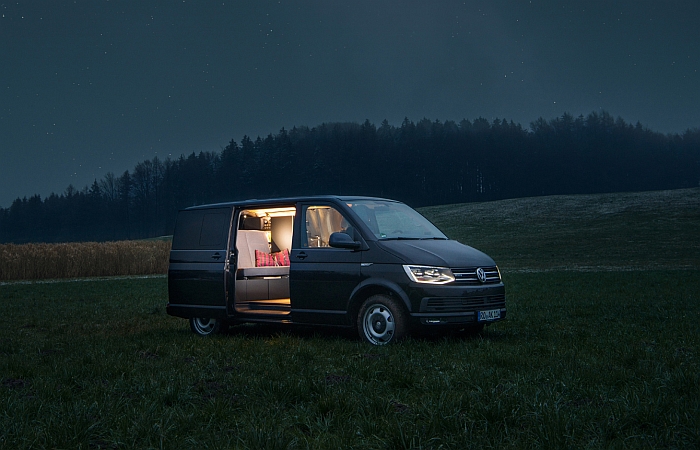With Holzklasse designer Nils Holger Moormann and VW bus fabricator CustomBus have brought Moormann design to the highways, and for all, the byways.
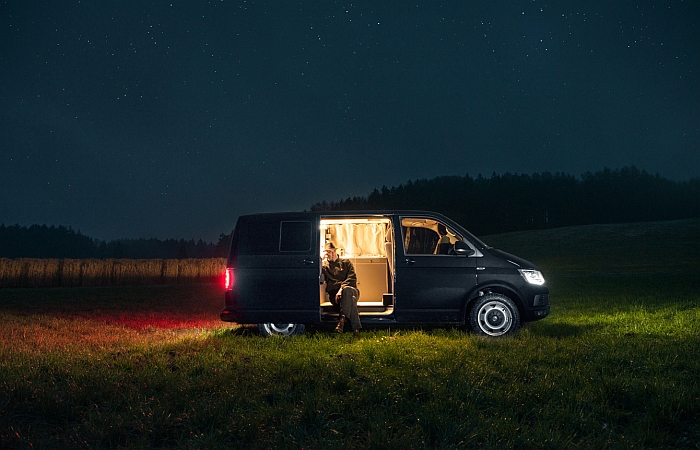
For many the "open road" is the ultimate synonym of a carefree life.
And an unachievable dream.
Which is of course what makes it such a seductive synonym.
For Nils Holger Moormann the open road is daily reality as he travels Europe visiting clients, customers and designers.
When he recently decided to purchase a VW bus in which to undertake his travels he was, in his own words, "not amused" by the available interior options, and thus did what any respectable designer would do, designed his own interior.
The result, realised in cooperation with German custom VW bus specialists CustomBus, is the Moormann Holzklasse
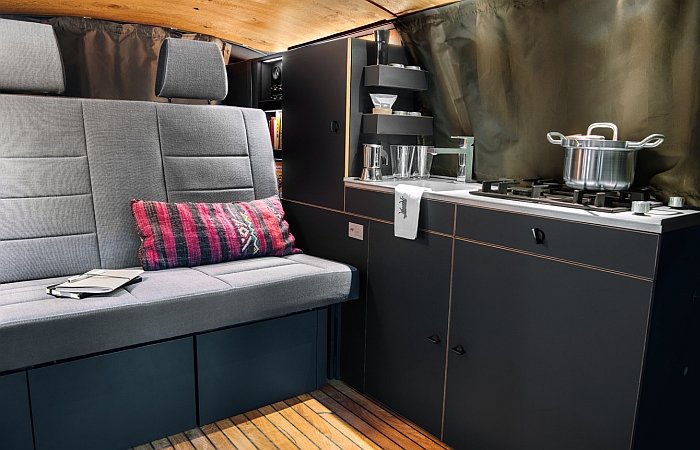
Nils Holger Moormann's relationship with the open road is long, almost as long as the endless highway from which many, all ?, of us dream.
As a younger man Nils Holger Moormann undertook long tours by car until he decided that "navigating tons of old iron around the world can't be right", and switched to motorbikes. Before he began to question the sense in that, and started cycling. And cycling. And cycling. And cycling. Continents being traversed.
And a biography which helps put objects such as Easy Reader or Bookinist in perspective.
Nils Holger Moormann's travels are and were however not purely about leisure. The (hi)story of the Nils Holger Moormann company is largely one of Nils' journeys, or as Nils told us in an earlier interview, having decided in the early 1980s to concern himself with contemporary furniture he "would travel through Germany and Europe meeting designers and architects who were producing their own designs and would take on the distribution for them."
Thirty years later only the vehicle has changed.
Initially Nils owed a Toyota Landcruiser the intervening decades having also featured, amongst many others, a Chevrolet G20 van, a Peugeot Partner delivery van and a Renault Grand Espace.
And that not just as a mode of transport.
"I have always slept in my car, because on the one hand in the beginning I had no money for hotels and so it wasn't an option," explains Nils, "but on the other I have never been very taken with the idea of hotels, always preferred the freedom of sleeping in the car, the ability to stop where I want want, move on when I want and now I am so used to it I can't imagine doing anything else."
However before he could imagine doing such in a VW bus, Nils had to develop an interior to his liking.
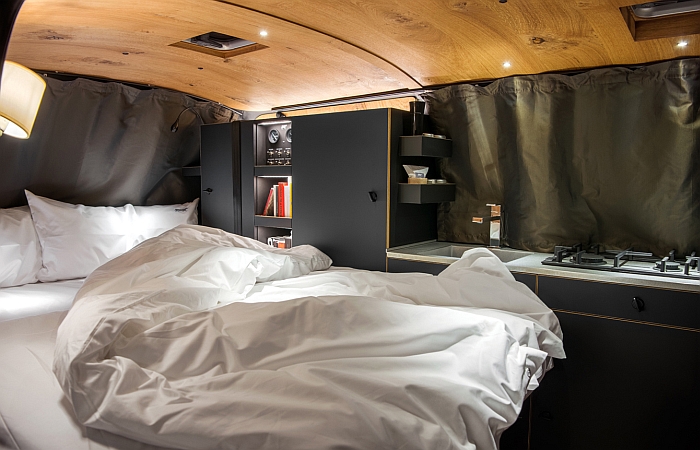
Being, as he is, more or less permanently on the road, meant Nils could continually work on the project: using his time on, and for all, next to, the road in a, more or less, standard custom, VW bus to consider what was required, was practical, was desirable in such a bus, but for all that which corresponded to Nils' understanding of such a bus's interior.
"What was particularly important for me was that there was no plasta and elasta, no fake, impractical surfaces which pretend to be something they are not, but rather materials which are both honest and also easy to clean and maintain"
The result is kitchen units crafted from pearl touch stainless steel, an oak floor with rubber inserts for improved grip, flame-retardant textiles, domestic quality lighting for a comfortable, homely, atmosphere and units with Fenix fronts.
The decision for the nanotechnology material Fenix came more or less by chance: at the time Moormann (the Nils) was developing his bus design, Moormann (the company) was experimenting and working with Fenix, thus allowing Nils to develop a better understanding of its properties and possibilities. And become just a little obsessed by it. Almost to the point of sounding more like a sales rep than a client. "Initially everything was supposed to be plywood, which would have been an absolute folly", he begins, "Fenix is super because it has this insane surface, is super to the touch and super easy to clean, once over with a damp cloth and fertig, aus, you're done."
In addition Nils placed a particular emphasis on the construction of the units and the visual harmony, "everything should appear as if it is one surface, the doors should fit as if cast in place, you shouldn't see the frames or hinges, so things that are obvious, self-explanatory for a furniture designer but which one doesn't find in other VW buses, yet which help create a much calmer interior."
Similarly the exterior is in many respects an example of both the value of design thinking and also of the (near) universal truth that less is more, or as Nils enthuses, "what I really like is that from the outside it looks like a completely normal bus, no plugs, no heating outlet, no fridge ventilator. I can park it where I want and no-one knows what's all inside, it just looks like a standard VW bus"
But does so much enthusiasm also generate a little motivation to travel a little more?
"I hope not!" comes the instantaneous response, "I'm on the road enough as it is, but when I'm underway then I want to enjoy it, and with the new bus I have it good. I sleep very well in it, I have everything that I need and then when I get the chance to stop in a forest somewhere, Herrlich!"
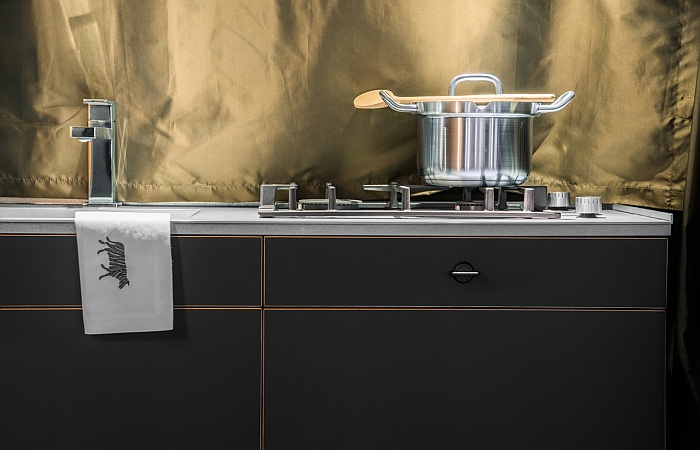
Initially the plan had been simply to develop a vehicle for Nils, one for his daily use and one which corresponded to his understandings of how such a bus should be designed; however, as he explains, "when we thought things a little further, we realised it meant an awful lot of work and so decided that if we're going to do the work then let's try to make a project out of it."
And with Langenhagen bei Hannover based CustomBus found a partner who had the necessary specialist knowledge technical experience.
Established in 2006 by Craig Kammeyer as a one man operation CustomBus arose from Craig's personal passion for customising VW buses, a passion he further nurtured, and increasingly professionalised, throughout his days as a Holzingenieurwesen - Wood Engineering - student at HAWK Hildesheim and which ultimately became his Diploma project, the theoretical component of which forming the basis of the economic business model for CustomBus, or as Craig puts "I moved perfectly prepared from the lecture theatre into self-employment!"
A self-employment which over the past decade has grown into a company of 10 employees, supported by local subcontractors, and which has evolved from customising used and customers' own VW buses to supplying brand new VW T6 buses customised to the users requirements.
In addition CustomBus have invested in developing new technology for the VW camping bus including a patented seating bench, the development of which also has its origins in Craig's passion for the VW bus, and for all the dissatisfaction with the limitations of the standard seating banks, a dissatisfaction which grew over the years, "I had this dream that when we were established I would develop my own bench, do everything right, and so when the opportunity presented itself I naturally took it", explains Craig. The subsequent development took three years, including going through the mandatory crash tests, not something most furniture designers have to contend with, and the result is a seating bench which in addition to offering particularly easy installation/removal, as well as uncomplicated folding/unfolding for transformation into a bed, is designed so as to optimise the available storage space.
And something which is not only a unique feature of the CustomBus portfolio but offers a much more durable and responsive solution in a vehicle which invariably has to serve various functions. And which as a functional bed/bench serves as one of the central elements of the Moormann Holzklasse, "when we showed it to Nils he found it fantastic", continues Craig, "and so it is included as standard in the Holzklasse interior, and that in a slightly higher material quality than is found in our other buses"
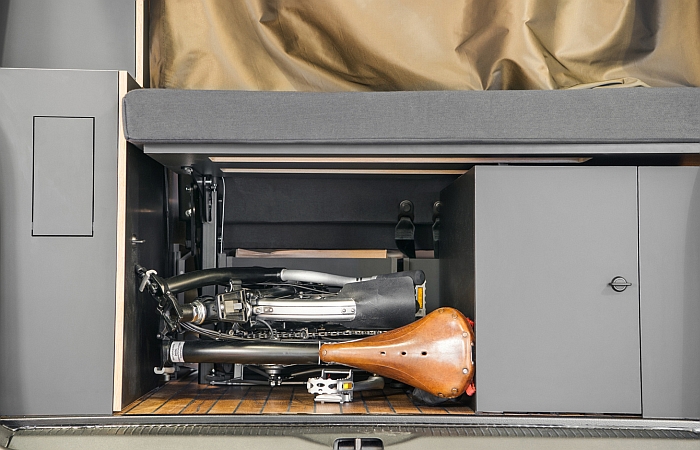
The decision to cooperate on the project developed slowly over a period of time and conversation before being sealed after Craig spent a day at Moormann HQ in Aschau brainstorming ideas with Nils and the Moormann Design Team.
In terms of the practical project development, the design concept and ideas came from Aschau, Nils being assisted on a daily basis by Felix Pöttinger from the Moormann Design Team, the technical realisation and problem solving being undertaken in Langenhagen by Craig and his team; and after, literally, incalculable hours of work, consideration, discussion, discussion, consideration and work, Holzklasse was presented to the public in spring 2016.
Speaking to both Nils and Craig one gets the very, very, clear impression that for both Holzklasse was as much about potential PR as the product; was a project undertaken with enthusiasm, passion and serious professional commitment, but without any conviction that it would lead to orders. And if it didn't, but generated some press, that would also be an acceptable result.
And the project certainly generated press: from design blogs to specialist campervan publications and on to mainstream motoring magazines, Holzklasse created a global resonance.
And orders. Meaning that in December CustomBus will start with the production of Holzklasse; and that despite the fact there is no Holzklasse potential customers can view, no possibility to get a first hand impression of the product, for as Nils points out "there is only one, and that's mine and it is always in use!"
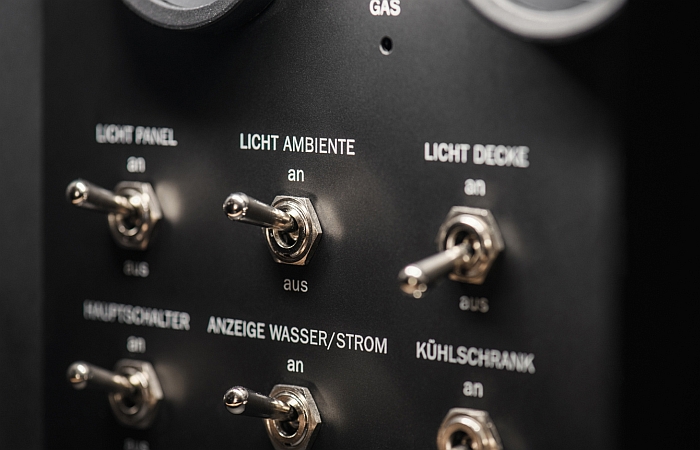
A principle reason for the positive echo is arguably related to the aforementioned sense of freedom associated with the open road, and of achieving the unachievable dream, something which in Craig's experience, of which he has ten years, ever more individuals are realising, "in my opinion it is related to developments within society, a career isn't so important today, life/work balance has a higher priority, and increasingly individuals don't define themselves by status symbols but rather the way they live their lives and the lifestyle decisions they make, and in context of such a social development, such a bus fits perfectly"
While in addition one shouldn't underestimate the excellent reputation both companies have earned in their respective fields: in which context it is interesting to note that neither have participated at trade fairs for many years, the strength and stability of their brands, market positions and craftsmanship making such superfluous, and the monies saved being invested in the infrastructure and product development, such as CustomBus's seat bench, and thus a strengthening of the reputations. Or in the case of Moormann's decision not to participate at Qubique 2011, invested in the Bookinist Cup. Which with hindsight was always going to be the better decision.
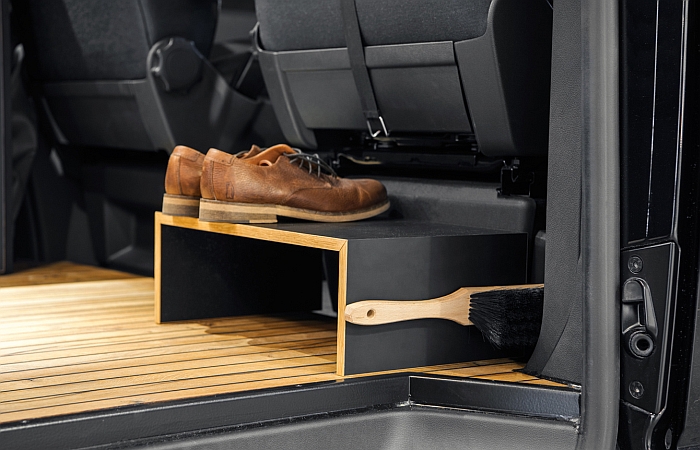
Which all just leaves one question unanswered. Nils Holger Moormann once told us that good design needs time to mature, a statement which raises the obvious question as to if now having undertaken his first journeys, has he found room for improvement?
"I have started compiling a list as to what can be improved", confirms Nils, "but that was obvious, as a designer one is always highly critical, always sees things that could be improved, but in principle it is mission completed!"
What that means, and how you can create your own custom Moormann Holzklasse VW bus, if can be found at www.custom-bus.de
